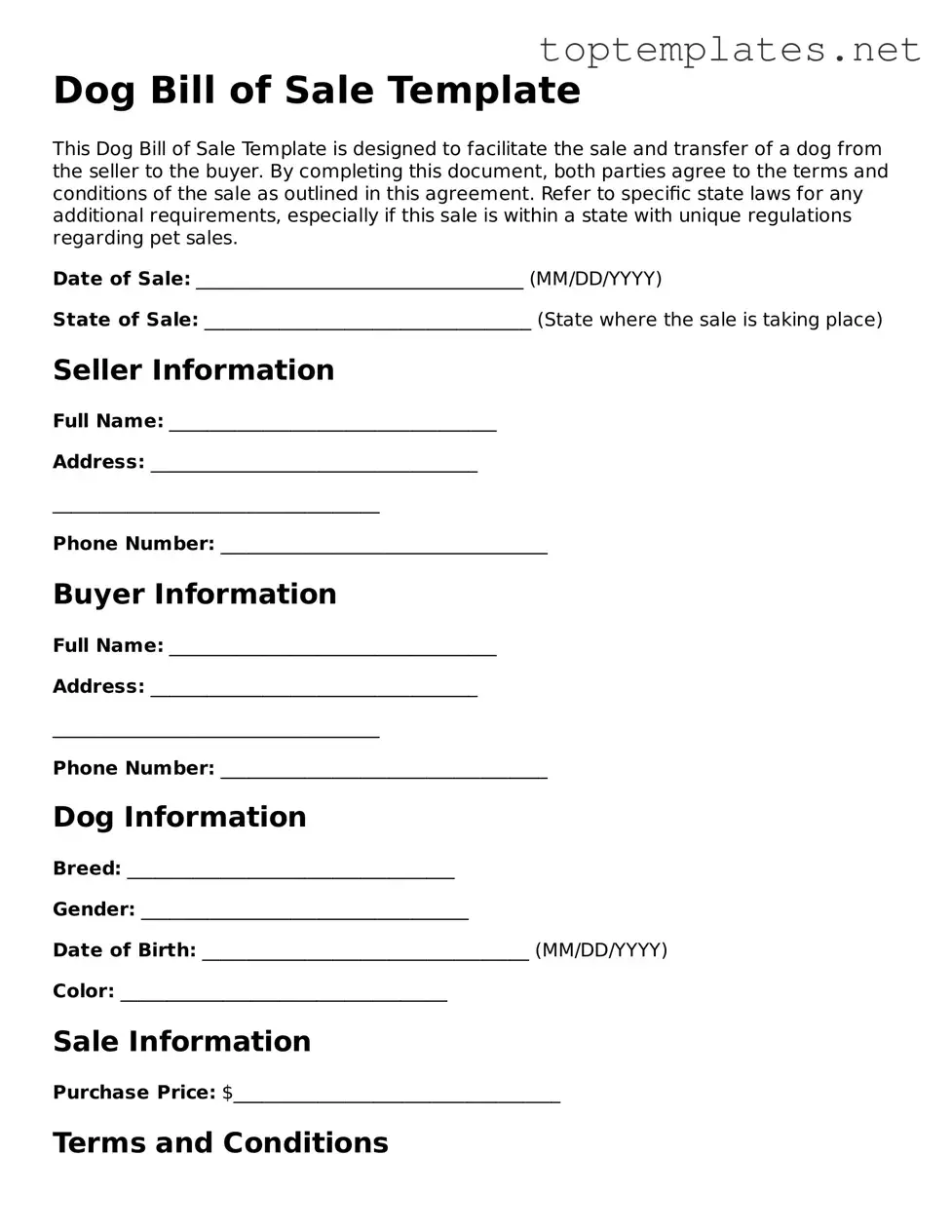Dog Bill of Sale Template
This Dog Bill of Sale Template is designed to facilitate the sale and transfer of a dog from the seller to the buyer. By completing this document, both parties agree to the terms and conditions of the sale as outlined in this agreement. Refer to specific state laws for any additional requirements, especially if this sale is within a state with unique regulations regarding pet sales.
Date of Sale: ___________________________________ (MM/DD/YYYY)
State of Sale: ___________________________________ (State where the sale is taking place)
Seller Information
Full Name: ___________________________________
Address: ___________________________________
___________________________________
Phone Number: ___________________________________
Buyer Information
Full Name: ___________________________________
Address: ___________________________________
___________________________________
Phone Number: ___________________________________
Dog Information
Breed: ___________________________________
Gender: ___________________________________
Date of Birth: ___________________________________ (MM/DD/YYYY)
Color: ___________________________________
Sale Information
Purchase Price: $___________________________________
Terms and Conditions
- The seller guarantees that the dog is in good health at the time of sale.
- The buyer has the right to have the dog examined by a veterinarian within a specified time frame from the date of sale.
- All sales are final after the specified period for veterinary examination has passed.
- The seller is not responsible for any medical expenses incurred after the sale.
- The buyer agrees to provide the dog with a caring and loving environment.
Signatures
By signing below, both the seller and buyer agree to the terms and conditions of this Dog Bill of Sale.
Seller's Signature: ___________________________________
Date: ___________________________________ (MM/DD/YYYY)
Buyer's Signature: ___________________________________
Date: ___________________________________ (MM/DD/YYYY)
This document is not a substitute for legal advice or services. Consult with a legal professional if you have questions about this Dog Bill of Sale or about the sale of pets in your specific state.
